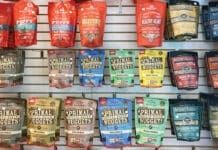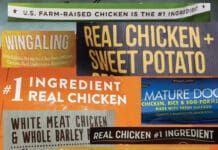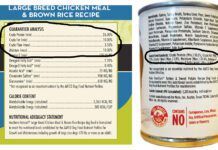Dog Food for Sensitive Stomachs
The term “sensitive stomach” refers to a variety of gastrointestinal issues that can impact dogs of all breeds, age, and size. For dogs with sensitive stomachs, meals can cause discomfort and distress. Digestive issues can negatively impact our pet’s quality of life and leave many owners searching for a solution to help alleviate their dog’s digestive issues.
Low-Fat Dog Food for Weight Management
The best dog food to help dogs lose weight is one that is formulated to provide fewer calories per serving, while still meeting the minimum requirements of essential nutrients.
Human-Grade Dog Food Choices
In recent years, there has been a significant shift in the pet-food industry, with owners prioritizing the health of their pets by focusing on...
Best Air-Dried, Freeze-Dried, and Dehydrated Dog Food for 2024
More and more pet food companies are entering this diet niche—and innovating all-new manufacturing methods and food forms.
Kangaroo Dog Food, a Potential Solution for Food Allergies
Kangaroo meat, sourced from wild kangaroos native to Australia, is a red meat that has been used as staple in the diets of indigenous Australians for centuries. With its lean protein content and rich nutrient profile, kangaroo meat has gained popularity as a premium protein source for dogs.
Hydrolyzed Protein Dog Food
The process of hydrolyzation uses enzymes to break proteins in dog food down into smaller, more easily digestible pieces. While hydrolyzed proteins are generally easier to digest, some dogs may experience gastrointestinal upset during the transition period to the new diet.
Chicken-Free Dog Food
The the number of chicken-free dog foods is small relative to the number of dog foods overall as its wide use in dog food manufacturing can lead to cross contamination of dog foods whose recipes are chicken free.
Finding The Best Large-Breed Puppy Food
Choosing a food for a new puppy is always a bit worrisome, but for those who adopt large or giant breed pups, selecting the...
Low Protein Dog Food
Many dogs are prescribed low-protein diets to alleviate kidney workload, help with gastrointestinal issues or kidney disease. However, protein is vital to a dog's health and there is dog food that is low in protein, and dog food with really low protein.
Best Dog Food for Weight Gain
If your dog is too thin, adding calories is the obvious solution. Calories can come from different ingredients, but their sources can be broken down into three main categories: proteins, fats, and carbohydrates.
Dry Dog Food Labels: How to Compare Fat, Protein, and Carbs
Federal and state laws require pet food makers to put information about the protein and fat content of their products on pet food labels. Unfortunately, few people understand this critical information.
Which Type of Dog Food is Best?
What kind of dog food is best? Is canned food healthier than kibble? Does a homemade dog food diet require as much work as it appears to? Whole Dog Journal developed a very comprehensive pros and cons chart for various dog food options you may be considering. Remember: no one dog food is best for all dogs! Consider your dog's lifestyle and needs and use this chart to help you decide what kind of food your dog should eat.



















